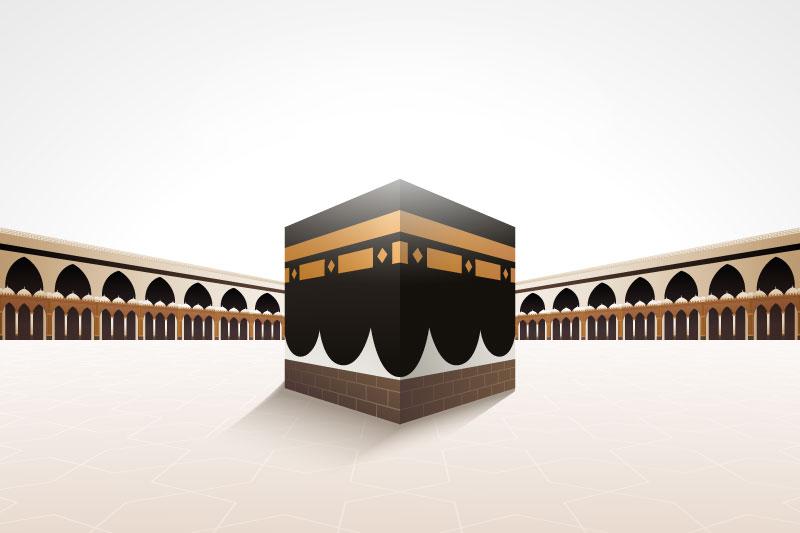Beyond the Rituals: Exploring Holy Sites During Your Umrah Trip

The primary purpose of performing Umrah is, without a doubt, to engage in the sacred rituals of Tawaf around the Kaaba and Sa'i between Safa and Marwah. These acts of worship form the core of the pilgrimage, bringing immense spiritual reward and a profound sense of connection to Allah (SWT). However, the journey to the holy cities of Makkah and Madinah offers much more than just the performance of these rites. Surrounding these blessed centers are places steeped in rich Islamic history and spiritual significance. Visiting these holy sites, often referred to as Ziyarat, offers a unique opportunity to delve deeper into the past, understand the struggles and triumphs of the Prophet Muhammad (PBUH) and his noble companions, and ultimately strengthen your faith. This article will guide you through some of the key historical and spiritual sites in Makkah and Madinah that complement your Umrah experience, making your pilgrimage truly comprehensive and deeply meaningful.
The Significance of Ziyarat (Visiting Holy Sites)
Why should a pilgrim take time away from the Grand Mosque to visit other sites? The answer lies in the profound benefits of Ziyarat. Firstly, it provides a direct historical connection. By standing in the very places where the Prophet (PBUH) lived, struggled, and preached, and where his companions sacrificed and built the foundations of Islam, you gain a tangible link to Islamic history. This isn't just about reading books; it's about experiencing history firsthand.
Secondly, these visits offer immense opportunities for spiritual reflection. Seeing the caves where revelation descended, the battlefields where faith was tested, or the resting places of beloved figures can deepen your understanding of their sacrifices and strengthen your own resolve and faith. It allows for a more personal and emotional connection to the events that shaped Islam. Thirdly, Ziyarat is a powerful learning opportunity. Guides often provide detailed accounts of the historical events tied to each location, offering insights that might not be easily grasped otherwise. This knowledge about early Islamic history enriches your overall understanding of your faith. Ultimately, Ziyarat truly complements the Umrah experience. While the rituals purify the soul, visiting these sites nourishes the mind and heart, creating a holistic and unforgettable pilgrimage.
Holy Sites in Makkah (and surrounding areas)
Your journey will begin in Makkah, the heart of Islam. While Masjid al-Haram is your main focus, several other sites hold immense significance.
A. Masjid al-Haram (The Grand Mosque)
Even within the Grand Mosque itself, there's more to explore beyond just Tawaf. Your primary focus will naturally be the Kaaba, the sacred house of Allah, towards which Muslims pray worldwide. But take time to observe Maqam Ibrahim (the Station of Abraham), which holds the footprint of Prophet Ibrahim (AS). Look for Hijr Ismail, the semi-circular wall adjacent to the Kaaba, believed to be part of the original Kaaba structure, and a place where Duas are readily accepted. Also, try to identify the Multazam, the area between the Black Stone and the door of the Kaaba, where Duas are believed to be answered. The significance of Masjid al-Haram is unparalleled; it is the spiritual heart of Islam, where prayers are multiplied manifold. Beyond Tawaf, take moments to simply sit, observe the magnificent architecture, feel the powerful atmosphere, and witness the incredible diversity of pilgrims from every corner of the globe united in worship.
B. Jabal al-Noor (Mountain of Light) and Hira Cave
A short distance from Makkah lies Jabal al-Noor, famously known as the Mountain of Light. Tucked away near its peak is Hira Cave. This site holds immense significance as it is where Prophet Muhammad (PBUH) used to seclude himself for meditation, and most importantly, where he received the very first revelation of the Quran from Angel Jibreel (AS). The experience of climbing this mountain, though physically challenging, offers a powerful reflection on the Prophet's solitude, his profound connection with Allah, and the monumental moment when Islam's message began to unfold. It’s a place to ponder the weight of revelation and the beginning of prophethood.
C. Jabal Thawr (Mount Thawr) and Cave of Thawr
To the south of Makkah stands Jabal Thawr, another mountain of great historical importance. Within it lies the Cave of Thawr. This cave holds deep significance as it was the hiding place of Prophet Muhammad (PBUH) and his closest companion, Abu Bakr (RA), during their perilous Hijra (migration) from Makkah to Madinah, as they were pursued by the Quraysh. The story of the spider web and the pigeon's nest covering the cave entrance is a powerful testament to Allah's protection. Visiting this site offers reflection on profound lessons of sacrifice, unwavering trust in Allah's plan, and the strength of companionship in the face of adversity.
D. Jannat al-Mu'alla (Cemetery of Makkah)
Located near Masjid al-Haram, Jannat al-Mu'alla is the ancient cemetery of Makkah. It holds immense significance as the resting place of many revered companions and family members of the Prophet (PBUH), most notably his beloved first wife, Khadijah (RA), and his ancestors. When visiting, it's essential to observe proper etiquette: enter with humility, avoid walking over graves, and make sincere Dua (supplication) for the deceased. It's a place for quiet reflection on mortality and the legacy of those who came before us.
E. Masjid al-Jinn
A lesser-known but historically significant site is Masjid al-Jinn. Its significance stems from an incident where Prophet Muhammad (PBUH) is said to have met with a group of jinn (spiritual beings) who heard his recitation of the Quran and subsequently accepted Islam. This site offers a unique historical context to the Prophet's universal message, extending beyond humanity.
F. Other Notable Sites
If time and your package allow, other sites in Makkah are worth noting. The Birthplace of the Prophet (PBUH), though now a library, holds immense historical value. Also, Masjid Aisha (Tan'eem) is a key landmark, serving as the closest Miqat (boundary) for Makkah residents or pilgrims who wish to enter Ihram for a second Umrah.
IV. Holy Sites in Madinah (and surrounding areas)
After completing your rituals in Makkah, your spiritual journey will take you to Madinah, the illuminated city, home to the Prophet's Mosque.
A. Masjid an-Nabawi (The Prophet's Mosque)
Masjid an-Nabawi is the second holiest site in Islam and a place of immense tranquility and blessing. Your primary focus here will be on praying within its sacred confines. Seek out the Rawdah (The Garden of Paradise), a small, highly blessed area between the Prophet's grave and his Minbar (pulpit), where prayers are said to be especially accepted. Offer your salutations to the Prophet (PBUH) at his grave, and to his companions, Abu Bakr (RA) and Umar (RA), whose graves are beside his. The significance of this mosque is immense, with prayers here being multiplied in reward. Observe the beautiful architecture, the peaceful atmosphere, and the devotion of pilgrims.
B. Jannat al-Baqi (Cemetery of Baqi)
Just outside Masjid an-Nabawi lies Jannat al-Baqi, the historic cemetery of Madinah. It holds immense significance as the resting place of thousands of companions, many of the Prophet's family members, and early Muslims. It's a place of deep respect and reflection. Similar to Jannat al-Mu'alla, the etiquette for visiting is to enter with humility, avoid walking over graves, and make sincere Duas for the deceased.
C. Masjid Quba
A short drive from Masjid an-Nabawi, Masjid Quba holds the distinction of being the first mosque built by Prophet Muhammad (PBUH) upon his arrival in Madinah after the Hijra. Its significance is profound. The reward for performing two Rak'ahs of prayer here is immense, equivalent to performing an Umrah. Many pilgrims make it a point to visit and pray here.
D. Masjid al-Qiblatayn (Mosque of the Two Qiblas)
Masjid al-Qiblatayn, or the "Mosque of the Two Qiblas," is a unique historical site. Its significance lies in the fact that it was here that the direction of prayer (Qibla) was changed by Allah's command from Jerusalem to the Kaaba in Makkah. This momentous event is a powerful reflection on the obedience of the companions and the divine guidance that shaped the early Muslim community.
E. Jabal Uhud (Mount Uhud)
To the north of Madinah stands Jabal Uhud, a mountain with great historical weight. It is the significance of the Battle of Uhud, where many noble companions were martyred, including Hamza (RA), the Prophet's uncle. Visiting this site offers powerful reflection on lessons of sacrifice, the importance of obedience to leadership, and the consequences of disobedience. It's a poignant reminder of the early struggles of Islam.
F. Other Notable Sites
Other sites around Madinah include the Seven Mosques (Masajid Sab'ah), which are small mosques marking historical battle sites, and the Well of Uthman (Bi'r Uthman), a historic well purchased by Caliph Uthman (RA) for the benefit of the Muslim community.
V. Tips for a Meaningful Ziyarat Experience
To truly benefit from these visits, keep these tips in mind:
-
Go with a Knowledgeable Guide: Many Umrah packages, especially 5 Star Umrah Packages, include guided Ziyarat. A knowledgeable guide can provide historical context, explain the significance of each site, and answer your questions, greatly enhancing your understanding.
-
Maintain Respect & Etiquette: Remember the sanctity of these places. Dress modestly, speak softly, and avoid any actions that could be disrespectful.
-
Focus on Reflection: Don't just take photos. Take time to connect with the stories, lessons, and spiritual atmosphere of each location.
-
Make Dua: These are blessed locations. Utilize the opportunity to make heartfelt supplications to Allah (SWT).
-
Avoid Over-Commercialization: While souvenirs are available, don't let shopping distract you from the spiritual purpose of your visit.
-
Stay Hydrated & Comfortable: You'll be doing a lot of walking and standing. Wear comfortable shoes and carry water, especially in the heat. For pilgrims from the West Coast, many New York Umrah Packages also emphasize comfortable travel and guided Ziyarat to ensure a fulfilling experience.
VI. Conclusion
While the rituals of Umrah are the cornerstone of your pilgrimage, exploring the holy sites in Makkah and Madinah offers a profound complement to your journey. Ziyarat enriches your Umrah by connecting you deeply to Islamic history, allowing for spiritual reflection, and providing invaluable learning opportunities. By embracing these visits as an integral part of your holistic spiritual experience, you will return not only with your Umrah completed but with a heart full of knowledge, strengthened faith, and cherished memories. We encourage all pilgrims to consider these enriching excursions. Explore our agency's Umrah packages that thoughtfully include guided Ziyarat, ensuring a comprehensive and deeply meaningful pilgrimage for every traveler.


